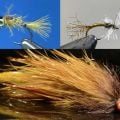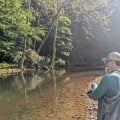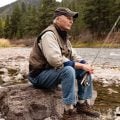ThinkSport Bottles
 On our recent trip to Yellowstone, we found ourselves in need of arguably the greatest benefit of modern civilization: hot coffee. It was sub-freezing, barely dawn, and all we had was a tent camp, a hiking stove, and a metal tea ball I’d picked up at a Restoration Hardware. All in all, the tea ball worked pretty well, better than “campfire coffee” (i.e., just throwing the grounds in and grimacing after each swig). But, the coffee got cold almost immediately in our paper cups, and frankly, brewing tea ball after tea ball of coffee was annoying and inefficient.
On our recent trip to Yellowstone, we found ourselves in need of arguably the greatest benefit of modern civilization: hot coffee. It was sub-freezing, barely dawn, and all we had was a tent camp, a hiking stove, and a metal tea ball I’d picked up at a Restoration Hardware. All in all, the tea ball worked pretty well, better than “campfire coffee” (i.e., just throwing the grounds in and grimacing after each swig). But, the coffee got cold almost immediately in our paper cups, and frankly, brewing tea ball after tea ball of coffee was annoying and inefficient.
What I needed was one of the new ThinkSport bottles (my review model missed me by a day as I headed to the Park). These things are genius. Conceived initially as an answer to the discovery that popular water bottles, including those made by Nalgene, contained (until last year) trace amounts of bisphenol A, which has been linked to cancer in some studies, the folks at ThinkSport did us one better. Instead of a single-walled metal bottle, they made a vacuum-sealed double wall model, which most of you would recognize as a “Thermos
” (technically, a brand name). They’re available in 750ml ($20) and 350ml ($16) sizes (a standard wine bottle is 750ml and–somewhat surprisingly–they hold the same amount, though they look smaller).
The ThinkSport bottles do a very good job of retaining heat–or cold–over several hours, like any thermos. But they’re especially good around the campfire, because they come with a double lid system which houses a metal mesh filter (like on some commercial coffee pots). So, all you need to do to brew up some coffee in a ThinkSport is throw the dry grounds into the bottle, add hot water, then cap it with the filter before screwing on the lid, and shake.
I found that I got the best results by adding the hot water *before* the filter (otherwise the water boiled off the filter faster than it could percolate into the bottle). I shook the bottle vigorously and used plenty of grounds, essentially making instant espresso. It also helps to jiggle or shake the bottle gently as you pour, so that the grounds move off the filter to let the brewed coffee through.
The only downside is that you still need cups. Of course, you could simply transfer the coffee to a temporary container, then empty the grounds out of the empty bottle and move the coffee back in to keep warm. That’s up to you; I know better than to tell anyone how to enjoy their delicious coffee. I also know that the next time I’m camping in freezing weather, I’ll be ditching the tea ball and bringing this bottle.
Do you simply put in a chaw of coffee grounds before guzzling water straight from the river? Know of another way to make morning coffee without lugging in the chow wagon? Let us know in the Comments section!
New Orvis Hydros Rods for 2010
Andy Mill to Manage Hardy Saltwater Rod Line











